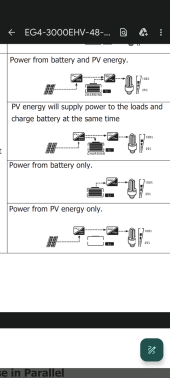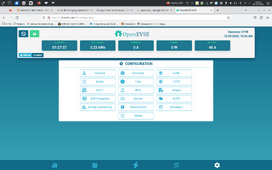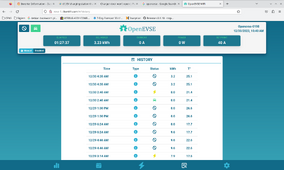niteraven78
New Member
- Joined
- Sep 5, 2022
- Messages
- 19
Hi all, I just finished building a solar carport for my 2023 Chevy Bolt EUV. I built it to be very simple with ~4.5k bifacial panels, 3000EHV-48 all-in-one and 3 EG4-LifePower4 48V batteries. Most works well except for my level 1 charging station occasionally glitches out while charging during full sun. Carport is off grid and not connected to utility. Here is the charger I'm using:
EVCARS Level 1 EV Charger 16A NEMA 5-15 25FT Portable EVSE D Electric Vehicle Car Charging Station (SAE J1722, Adjustable Amp, Time Delay) https://a.co/d/aacILqJ
If I charge my batteries during the day and charge the car at night it works flawlessly. Batteries are emptied during night and inverter shuts off.
A few times I have tried to charge the car during the day, if there is enough sun to fully charge the car, 8-12 amps, the EV charger will work for a few minutes and then start to glitch out by turning off and on repeatedly and making clicking noises.
My theory is the inverter believes it has enough power from sun so it's only using solar and not batteries. A cloud may come over and cause voltage fluctuations which trips the EV charger's under voltage protection. Is the EG4 inverter not able to to switch from solar to battery in realtime under full load? I have tried various setting combinations to no avail.
My questions are:
1) Are there inverter settings that can handle this situation? May only using battery as power source?
2) Has anyone found a charging station that can handle voltage or power fluctuations?
The free charger that came with the Bolt does not seem to suffer from these fluctuations but it's my backup and I'm keeping it in the trunk and out of the rain.
Thanks for any advice!
EVCARS Level 1 EV Charger 16A NEMA 5-15 25FT Portable EVSE D Electric Vehicle Car Charging Station (SAE J1722, Adjustable Amp, Time Delay) https://a.co/d/aacILqJ
If I charge my batteries during the day and charge the car at night it works flawlessly. Batteries are emptied during night and inverter shuts off.
A few times I have tried to charge the car during the day, if there is enough sun to fully charge the car, 8-12 amps, the EV charger will work for a few minutes and then start to glitch out by turning off and on repeatedly and making clicking noises.
My theory is the inverter believes it has enough power from sun so it's only using solar and not batteries. A cloud may come over and cause voltage fluctuations which trips the EV charger's under voltage protection. Is the EG4 inverter not able to to switch from solar to battery in realtime under full load? I have tried various setting combinations to no avail.
My questions are:
1) Are there inverter settings that can handle this situation? May only using battery as power source?
2) Has anyone found a charging station that can handle voltage or power fluctuations?
The free charger that came with the Bolt does not seem to suffer from these fluctuations but it's my backup and I'm keeping it in the trunk and out of the rain.
Thanks for any advice!






